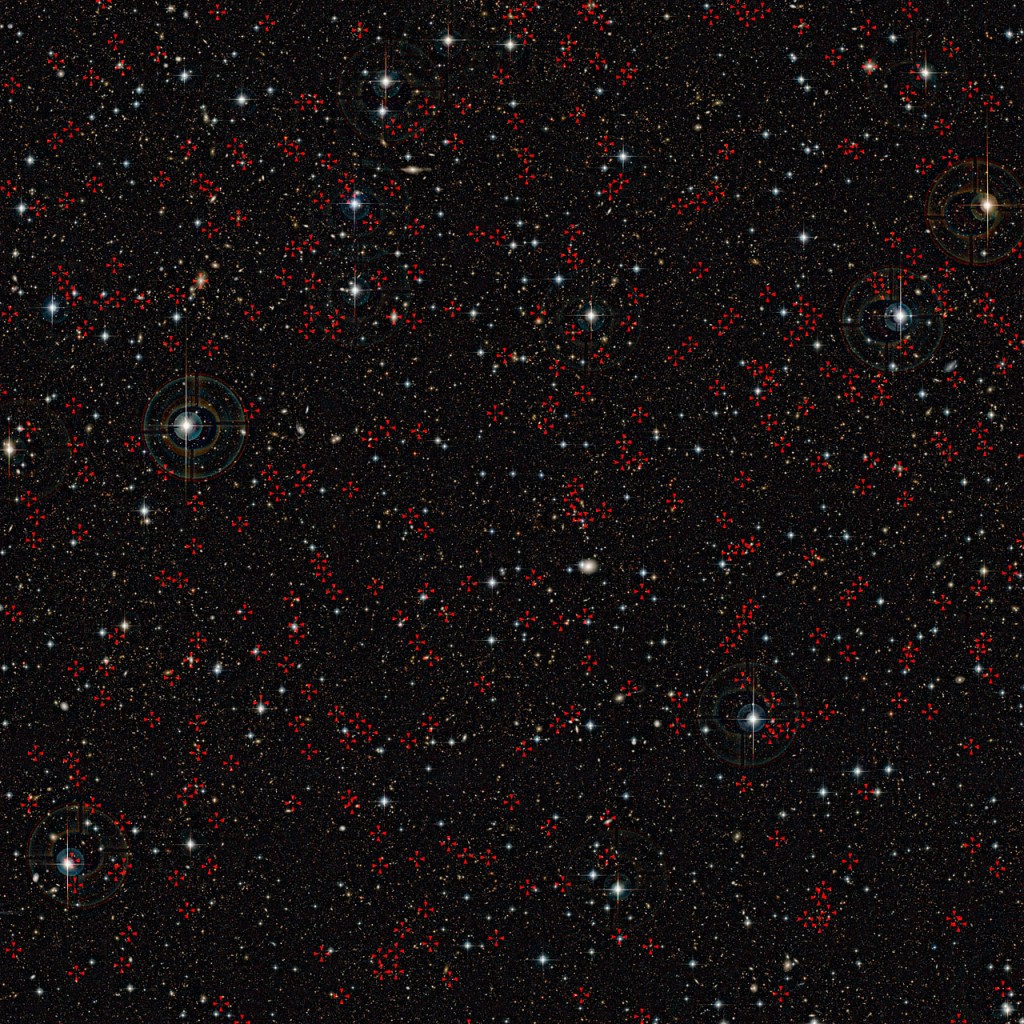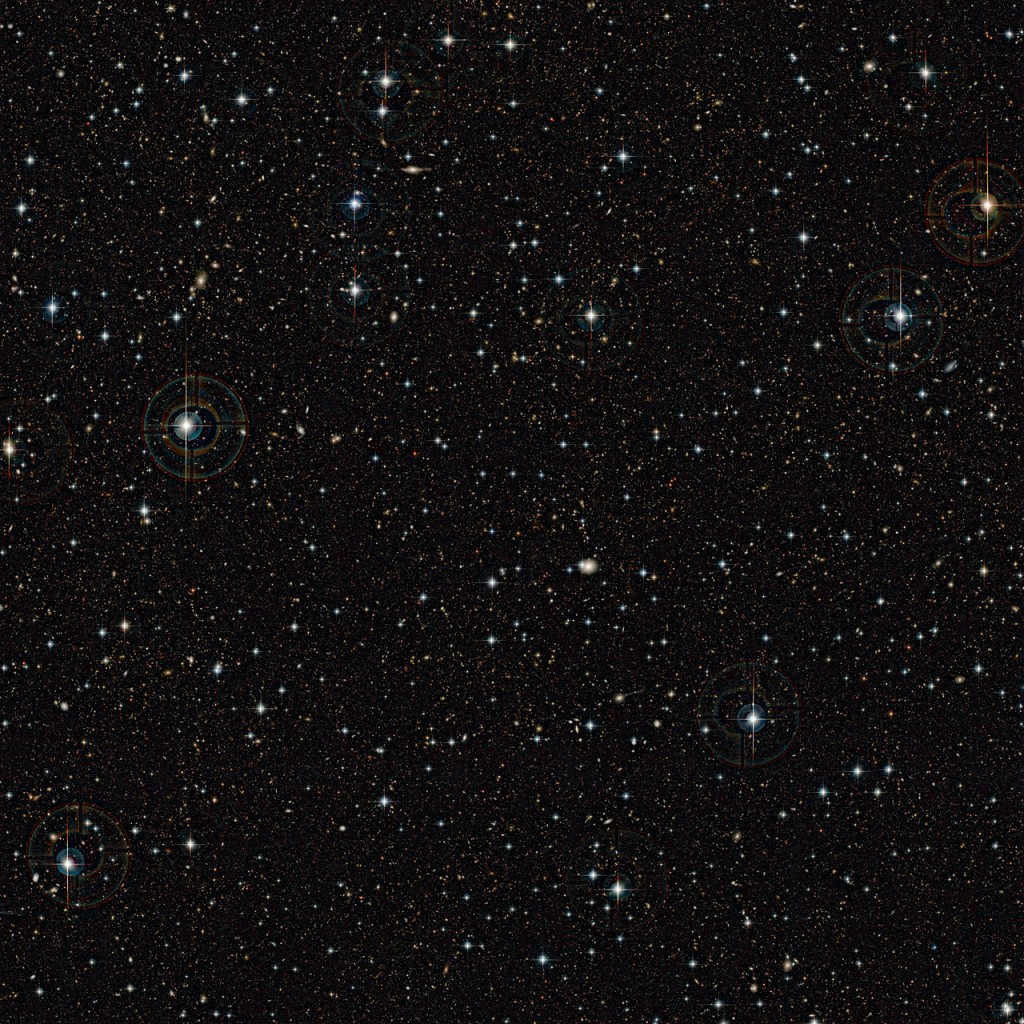In a surprise announcement earlier today (July 13), the European Southern Observatory said that monster black holes – those giants of millions or billions of solar masses, thought to lurk at the hearts of most galaxies – have a mechanism to become active other than galaxy collisions.
Prior to this, galaxy collisions were thought to cause supermassive black holes to begin sucking in surrounding gas, dust and stars – triggering violent outbursts at a galaxy’s core – marking the transition from a quiet galaxy, like our Milky Way, to an active galaxy. Here’s what ESO said.
A new study combining data from ESO’s Very Large Telescope and ESA’s XMM-Newton X-ray space observatory has turned up a surprise. Most of the huge black holes in the centers of galaxies in the past 11 billion years were not turned on by mergers between galaxies, as had been previously thought.
This conclusion results from a new study of more than 600 active galaxies in a patch of sky called the COSMOS field. Intensive study of this region shows the likelihood that the cores of galaxies and their lurking black holes become active due to processes – such as disc instabilities and starbursts – within the individual galaxies themselves. Results of the study appear in a July 2011 issue of The Astrophysical Journal.


In many galaxies, including our own Milky Way, the central black hole is quiet. But in some galaxies, particularly early in the history of the universe, where galaxies were closely packed together, the central black hole is believed to feast on material that gives off intense radiation as it falls into the black hole.
Peer toward the mysterious center of the Milky Way tonight
The process that activates a sleeping black hole – turning its galaxy from quiet to active – has been a mystery in astronomy. What triggers the violent outbursts at a galaxy’s center, which then becomes an active galactic nucleus? Up to now, many astronomers thought that most of these active nuclei were turned on when two galaxies merged, or when they passed close to each other and the disrupted material became fuel for the central black hole. Results of the new study indicate this idea may be wrong for many active galaxies.


To take a closer look at active galaxies, astronomers focused on a patch of sky called the COSMOS field — an area about ten times that of the full moon, in the constellation of Sextans (The Sextant). Astronomers have used a multitude of telescopes to map it at different wavelengths so that a series of studies and investigations could benefit from this wealth of data.
The presence of active galactic nuclei is revealed by X-rays emitted from around the black hole. Marcella Brusa, one of the authors of the study, said:
It took more than five years, but we were able to provide one of the largest and most complete inventories of active galaxies in the X-ray sky.
The team found that active nuclei are located mostly in massive galaxies with lots of dark matter. This was a surprise and not consistent with the prediction from theory — if most active nuclei were a consequence of mergers and collisions between galaxies, then they should be found in galaxies with moderate mass (about a trillion times the mass of the sun). But the team found that most active nuclei reside in galaxies with masses about 20 times larger than what merger theory predicts.
Work published last year from the NASA/ESA Hubble Space Telescope had shown there was no strong link between active nuclei in galaxies and mergers in a sample of relatively close galaxies. That study looked back about eight billion years into the past, but the new work pushes this conclusion three billion years further to a time when galaxies were packed even closer together.
Viola Allevato, lead author on the paper, said:
These new results give us a new insight into how supermassive black holes start their meals. They indicate that black holes are usually fed by processes within the galaxy itself, such as disc instabilities and starbursts, as opposed to galaxy collisions.
Alexis Finoguenov, who supervised the work, concluded:
Even in the distant past, up to almost 11 billion years ago, galaxy collisions can only account for a small percentage of the moderately bright active galaxies. At that time galaxies were closer together so mergers were expected to be more frequent than in the more recent past, so the new results are all the more surprising.

Bottom line: Even in the early universe, when galaxies were packed close together, collisions were probably not responsible for turning on supermassive black holes and thereby creating active galactic nuclei, according to a study by European Southern Observatory astronomers who looked closely at more than 600 active galaxies in a patch of sky called the COSMOS field. Results of their study appear in a July 2011 issue of The Astrophysical Journal.











